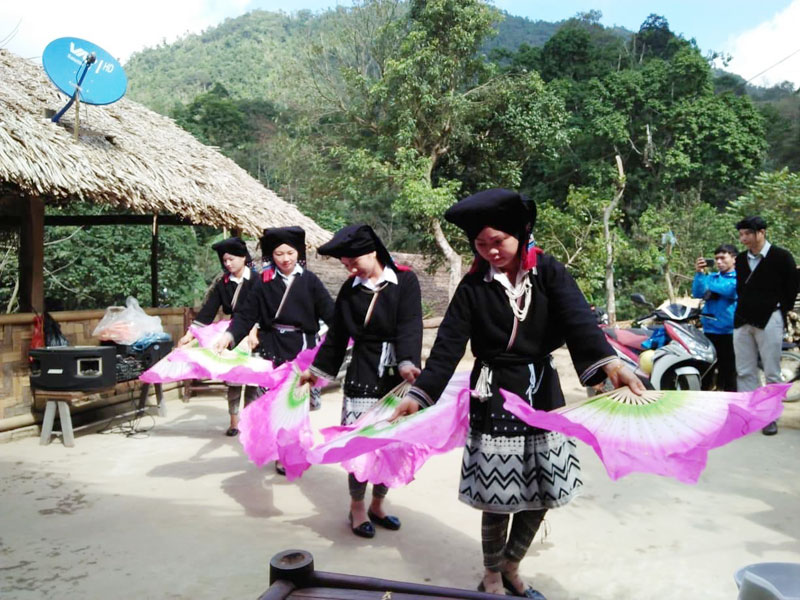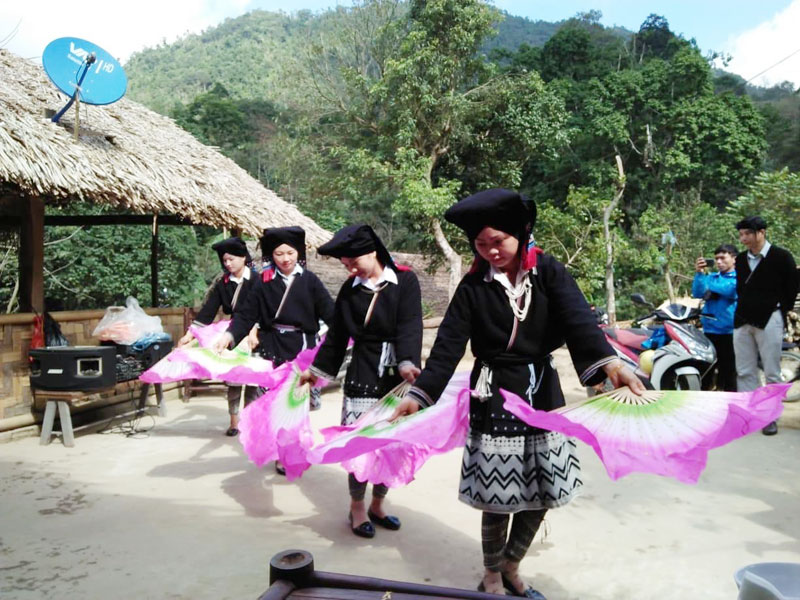


 The traditional dance of Dao ethnic
people is one of the traditional cultural beauties preserved and promoted by Da
Bac district.
The traditional dance of Dao ethnic
people is one of the traditional cultural beauties preserved and promoted by Da
Bac district.
In the past 5 years, the Party Committee and the authority of the district have been directing the cultural preservation in the spirit of Resolution No. 5 (Session VIII) on building and developing an advanced Vietnamese culture imbued with the national identity, the Resolution of the 9th Central Conference (Session XI) on building and developing Vietnamese culture and people meeting the country's requirements of the sustainable development, the Directive No. 41 dated on February 5, 2015 of the Secretariat (Session XI) on strengthening the Party's leadership over festivals.
Under the direction of the district, the department has promoted the propaganda so that the people can understand the importance of preserving and promoting the national cultural values. At the same time, they have been investing in building the cultural institutions associated with restoring the traditional festivals, which are in danger of disappearing. They have also been organizing the annual festivals in the community. Preserving the special customs, habits, handwriting and the national costumes in association with the implementation of the movement "All people unite to build a cultural life” has been encouraged to attract tourists. Thereby, the spirit of solidarity and the internal strength have been wakened up to fulfill the local socio-economic targets.
Implementing the Directive No. 41-CT/TN, the propagandizing activities have been widely and deeply implemented in various forms. Up to now, there are 2 provincial-scale festivals taking place every year in the district, namely Cau Muong festival of Tay people (Muong Chieng commune), and Dao festival to celebrate the new spring (Cao Son commune). The tangible cultural heritages, the historical and cultural relics ranked as the provincial level such as Bo temple, the national-level revolutionary historical relics of Muong Diem War Zone (Trung Thanh Commune) ... have been repaired and upgraded. Every year, there are more than 10 classes teaching Tay and Dao handwriting with the participation of nearly 250 ethnic minority students and the officials at the grassroots level.
From the movement the movement "All people unite to build a cultural life”, the cultural and artistic activities imbued with identity in the district have been increasingly developed with the participation of 122 entertainment teams, and 17 information teams have established with nearly 2,000 public actors and the casters at the grassroots level. Implementing the project of the Provincial People's Committee on building cultural houses in the hamlet in the period of 2016-2020, in the whole district there have been 110 cultural houses built, repaired and put into operation.
In the coming time, the district will closely follow the Party's guidelines and policies on preserving the cultural identities of the ethnic groups, disseminating and teaching Muong ethnic writing in the area. At the same time, all the resources will be mobilized to invest in infrastructure to organize the festival of Bo temple in Vua Nua commune in 2021 at the provincial scale.